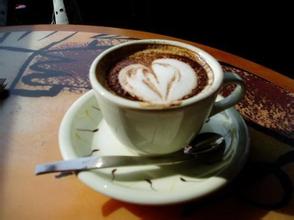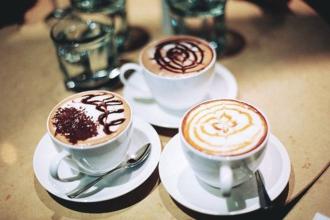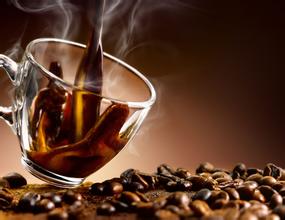Peruvian Coffee Flavor description characteristics of Grinding degree introduction of Fine Coffee beans in producing areas
In 1542, the Spanish royal family set up the Government House in Lima and established the Governor's District of Peru, which became the center of Spanish colonial rule in South America. At that time, Peruvian commerce was prosperous, merchants controlled most of South America's import and export trade, and the precious metals and other goods looted by the Spaniards from South America were shipped out of Peru. The colonists seized land wantonly in Peru and forced the "Mita system", forcing the Indians to engage in slave labor in the mines, resulting in a large number of Indian deaths. The Indians held many uprisings against Spanish colonial rule, including the Manco uprising in 1535, the Juan Santos uprising in 1742 and the Tupac Amaru uprising in 1780-1781.
Independence was declared on July 28, 1821, and the Republic of Peru was established. On October 28, 1835, Bolivia and Peru formally merged, known as the Peruvian-Bolivian Confederation. On February 20, 1839, the Confederacy completely disintegrated. Slavery was abolished in 1854. From 1879 to 1883, Peru joined Bolivia and Chile in the South American Pacific War for saltpeter production. After Peru's defeat, Chile seized Tarapaca, the world's largest saltpetre producing province, and controlled the Peruvian provinces of Tacona and Alika.
After peaceful negotiations between the two sides in 1929, Peru reclaimed the province of Tacona. In 1933, there was a border war with Colombia and the Secret War was defeated. In October 1948, Audrey launched a military coup and came to power. Belaunde Terry of the people's Action Party was elected president in June 1963. On October 3, 1968, Lieutenant General Velasco became president after a coup. General Morales took over power on August 29, 1975 and announced in 1977 that "political power would be returned to the people". In 1980, democratic elections were held to restore the civilian government. From 1990 to 2000, the leader of Reform 90, Fujimori (of Japanese origin), resigned and went into exile in Japan in November 2000. From 2001 to 2006, Toledo, leader of the Peruvian feasible party, served as president. From 2006 to 2011, Garcia, leader of the Apra party, served as president. On July 28, 2011, Humala, chairman of the Nationalist Party, became president for a five-year term.
Peru is located in western South America, with a coastline of 2254 kilometers. The Andes runs from north to south, and the mountains account for 1% of the country's area. it belongs to the tropical desert region with a dry and mild climate. Peruvian coffee is mostly grown at the foot of the Andes, where it is rich in traditional Central American top coffee beans.
Peru is a huge and diversified land for them to produce a large number of different kinds of coffee beans, Peru can produce very high-quality Peruvian coffee. In general, these coffee beans have the gloss of Central America, but they are all packaged in South American flavor. High-quality organic venues do have more rural coffee characteristics. As long as these coffee beans continue to add interesting flavors rather than weaken them. Such a cup of Peruvian coffee has all the bright and deep tastes. When a cup of ordinary Peruvian coffee is in your hand, you don't have to try to taste whether it is good or not.
Peruvian coffee beans are best known for their coffee beans from Chimacha Mayou in the middle and Cusco in the south. In addition, some areas in northern Peru also produce characteristic organic coffee. Organic coffee is made of beans grown in the shade of trees. Although the yield of coffee beans is not high because of the method of planting in the shade, its quality can reach the level of gourmet coffee. This is because shading trees can slow down the ripening of coffee trees, help coffee grow fully, make it contain more natural ingredients, breed better flavors, and reduce caffeine content.
Peruvian coffee is grown in a planned way, which has greatly increased coffee production. Its rich acidity and mellow smoothness are its most prominent features. Peruvian coffee has a soft sour taste, medium texture, good taste and aroma, and is an indispensable ingredient in the production of comprehensive coffee. High-quality Peruvian coffee, with strong aroma, smooth, layered, rich sweet, elegant and mild sour taste, will quietly awaken your taste buds.

Important Notice :
前街咖啡 FrontStreet Coffee has moved to new addredd:
FrontStreet Coffee Address: 315,Donghua East Road,GuangZhou
Tel:020 38364473
- Prev

Tastes, aromas, a lot of Tanzanian coffee, grind, characteristics, varieties, producing areas, fine coffee introduction
Kilimanjaro coffee is mainly suitable for blending, you can make your own blend or make a variety of fancy coffee. Brewing: To brew a good cup of coffee, in addition to fresh coffee powder and slightly harder water, there must be a handy brewing tool. There are three main types of coffee brewing machines commonly used. Drip filter: wet coffee powder with water, let
- Next

A particularly mellow civet coffee flavor description, grindability characteristics, introduction to the taste of varieties in producing areas
In the coffee industry, Kopi Luwak is widely regarded as a product with novelty as the selling point. The American Special Coffee Association (Specialty Coffee Association of America,SCAA) says the industry consensus is that it tastes bad. SCAA quoted a coffee expert as saying: obviously, the selling point of Kopi Luwak is its story, not its quality. Adopt SCAA
Related
- Detailed explanation of Jadeite planting Land in Panamanian Jadeite Manor introduction to the grading system of Jadeite competitive bidding, Red bid, Green bid and Rose Summer
- Story of Coffee planting in Brenka region of Costa Rica Stonehenge Manor anaerobic heavy honey treatment of flavor mouth
- What's on the barrel of Blue Mountain Coffee beans?
- Can American coffee also pull flowers? How to use hot American style to pull out a good-looking pattern?
- Can you make a cold extract with coffee beans? What is the right proportion for cold-extracted coffee formula?
- Indonesian PWN Gold Mandrine Coffee Origin Features Flavor How to Chong? Mandolin coffee is American.
- A brief introduction to the flavor characteristics of Brazilian yellow bourbon coffee beans
- What is the effect of different water quality on the flavor of cold-extracted coffee? What kind of water is best for brewing coffee?
- Why do you think of Rose Summer whenever you mention Panamanian coffee?
- Introduction to the characteristics of authentic blue mountain coffee bean producing areas? What is the CIB Coffee Authority in Jamaica?

